Let’s Take This Outside
With last year’s unprecedented events having a profound impact on all aspects of life, it comes as no surprise that more people are seeking to enjoy the great outdoors from the comfort of their home by incorporating an outdoor kitchen into their residence’s existing framework. Here, Emma Warner Allen sits down with with Adam Douglas, outdoor kitchen specialist at Limetree Alfresco to discuss the ways to create a beautiful and functional outdoor kitchen.
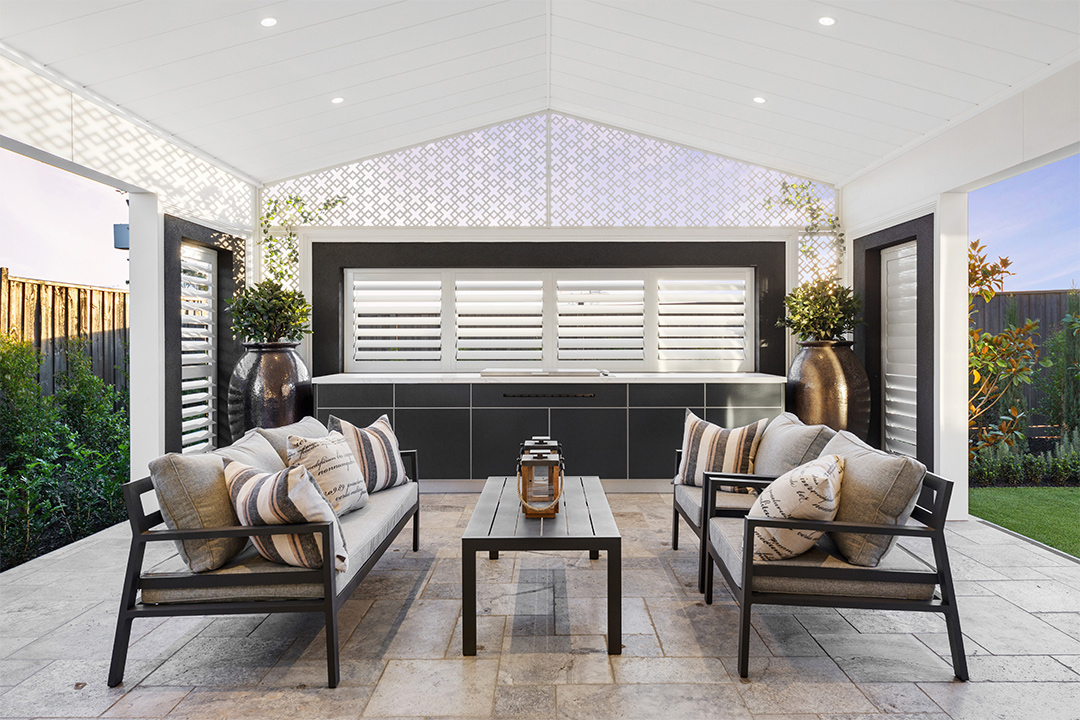
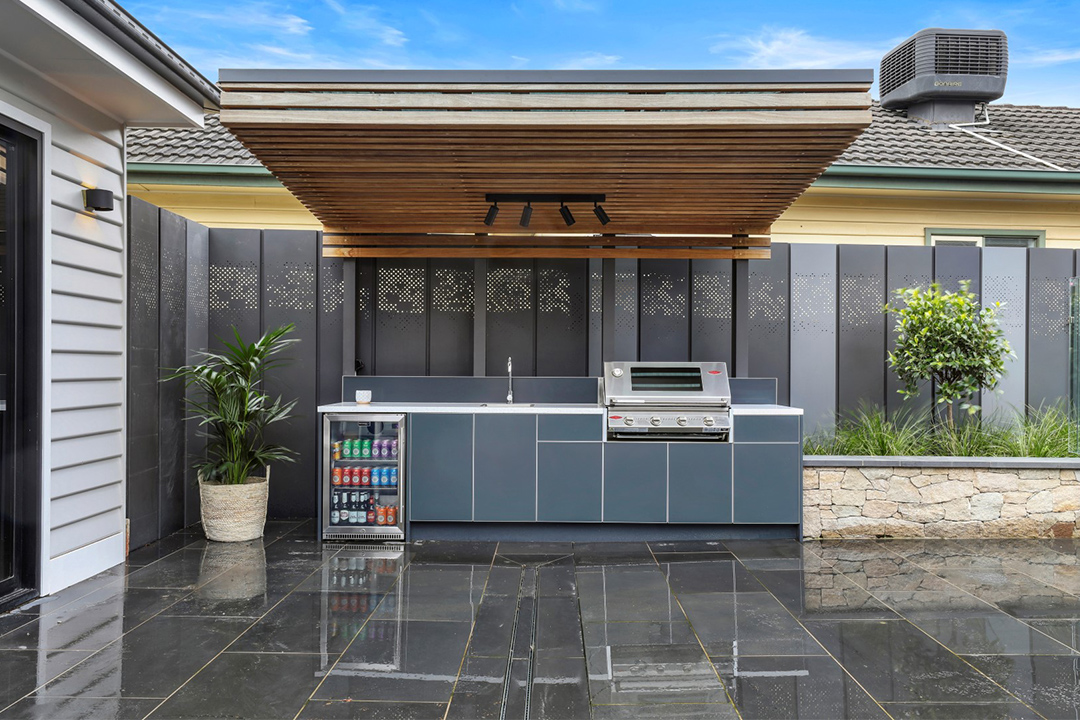
The kitchen has stood at the heart of the home since its creation; conjuring images of families gathered around a central hearth to share the day’s events and nourishment, the kitchen still serves the same function to this day and is an integral part of the household. As the influence of modern living can be observed in all aspects of life, the humble kitchen has also been elevated – though its function remains the same. Seeking to integrate two of the home’s finest features, the outdoor kitchen serves to unite loved ones while taking advantage of the glorious weather and native flora and fauna this nation is renowned for.
PRIME POSITION
When planning the perfect outdoor kitchen, it is important to consider the spatial requirements and what function you would like this area to serve. Douglas recommends consulting a professional before embarking on your alfresco transformation to ensure you set realistic expectations and receive the best advice. The process for Douglas begins with a consultation, “we begin with a phone consultation to run through the design process with our clients.” Douglas continues, “the main thing we discuss is the kitchen’s placement in relation to the existing outdoor area, or the planned outdoor area, and how they’re going to interact with it. It’s really useful if they can visualise how they’re going to live in the space, and we try to give them a hand to do that.”
If you’re working with a smaller space, “less is more.” Douglas asserts, “Part of the outdoor kitchen appeal is that it doubles as a piece of furniture, so it’s got to look good. We get a lot of kitchens where people try to pack too much into a small space. And if you’re trying to cram a lot into a small space, it doesn’t function properly, and it just looks overcooked.” However, there are ways to combat limited space. Douglas recommends getting creative with solutions such as, “looking at a smaller barbecue, or potentially consider something on wheels. If you need more bench space, you could build a frame with a matching benchtop that’s portable and can be wheeled around to where you need it.”
RELIANCE ON THE APPLIANCE
Once you’ve considered the position of the kitchen and the purpose it will serve, it is important to consider how you will achieve its purpose. Douglas agrees that a kitchen’s, “primary function is cooking and then secondary is entertainment” and as outdoor kitchens and alfresco areas become increasingly popular, innovative takes on the classic design are emerging. “We’re seeing a trend in outdoor kitchens – they’re getting bigger, and people are putting more into them because they’re spending a lot more time in that alfresco environment. So, we’re putting in things like beer kegs with a tap, icemakers, dishwashers – all kinds of funky things.” Douglas has even constructed a space for the owner’s dogs. “We just did a job where we built a dog bed into the outdoor kitchen, if you can believe it”, he laughs, “it was a big double cupboard with one door that opens up to a dog bed, so it can climb in there out of the way, and it’s all integrated into the kitchen.”
Quirky additions like wood-fired pizza ovens, and drink’s fridges aside, Douglas stresses the importance of considering the practicality of your outdoor setup. “The integration of a sink makes a huge difference because it makes the outdoor area self-contained. If you have a sink with running water, you can wash things and put them away rather than going back and forth between the indoor kitchen” – an important consideration if you are entertaining. “With an outdoor sink, people often overlook a cover. If you’ve got a storm, a sink becomes a magnet for dirt and debris, so we can create a piece of benchtop that is cut to the size of the sink to create a lid that doubles as extra bench space when not in use.” Douglas also recommends, “allocating a cabinet for some form of integrated waste system” which helps to keep things neat and tidy while you’re entertaining.
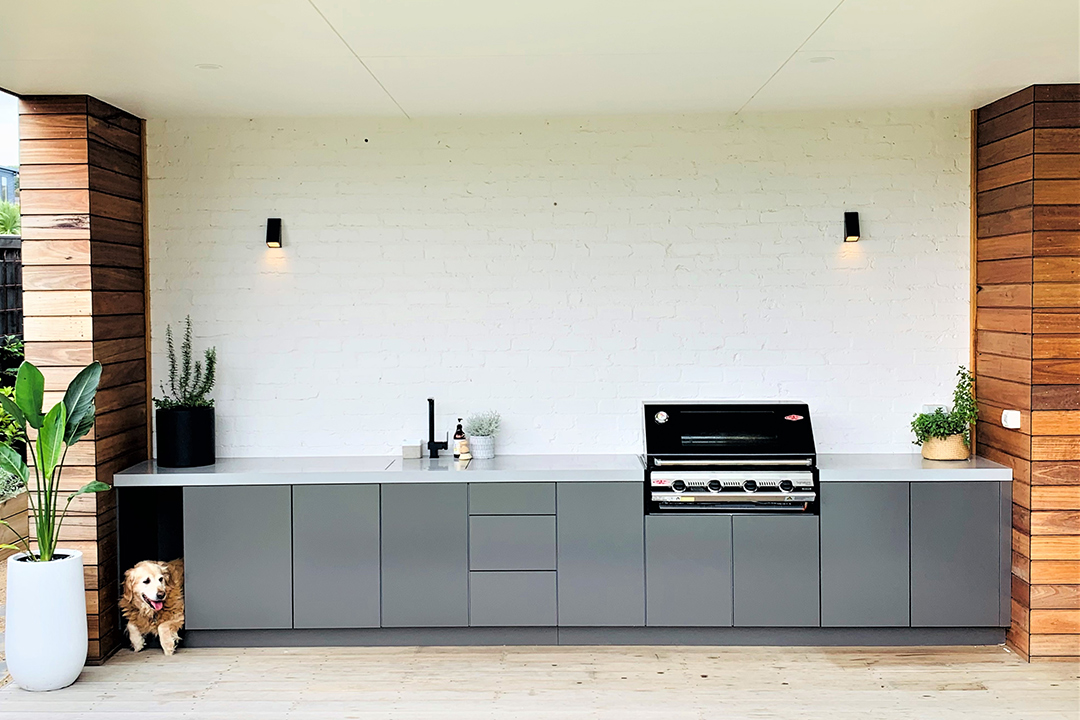
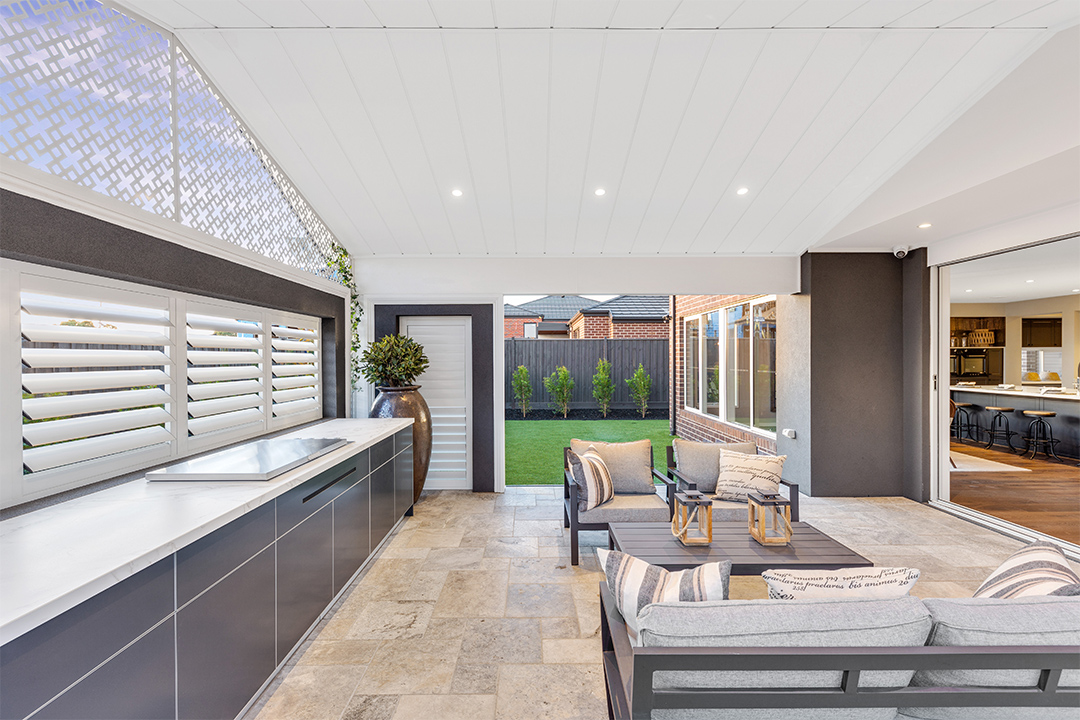
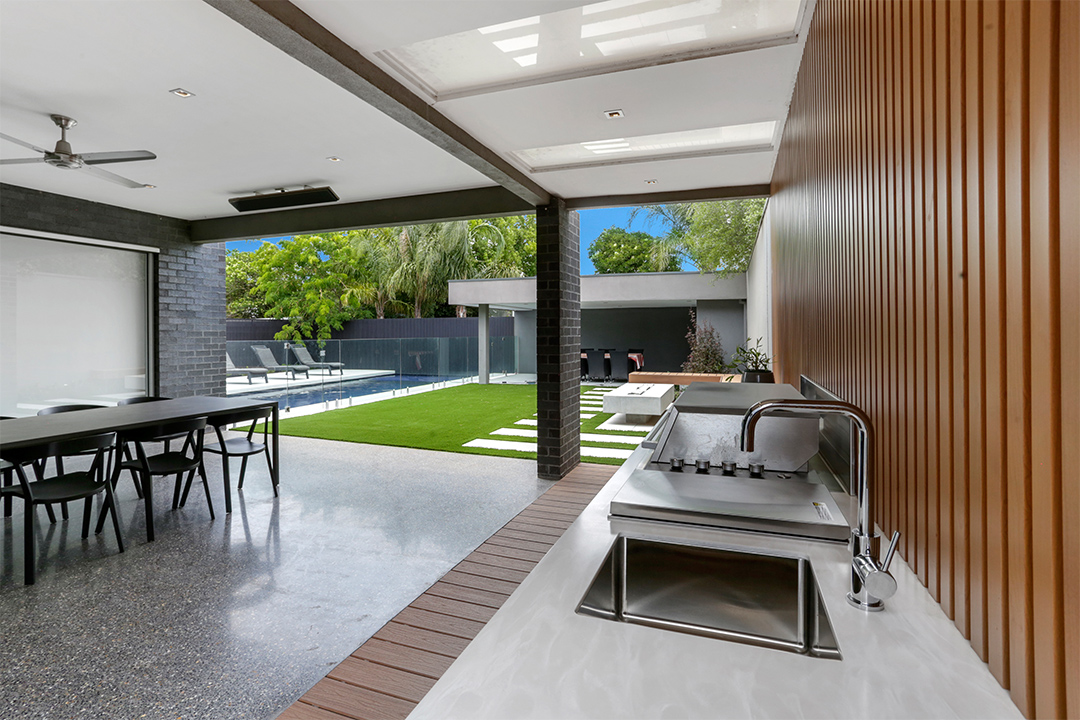
THIS IS WHAT DREAMS ARE MADE OF
The final aspect to consider when planning your outdoor kitchen is the materials you will use. Items that are durable and visually appealing is the optimum standard to strive for. Douglas states that often people, “want to match their outdoor colour scheme with indoors but that can be difficult because there are some indoor materials that aren’t suited for outdoors.” Therefore, if you’re wanting to create a harmonious look between your indoor and outdoor kitchen, beware of the limitations that may prevent this.
Douglas confirms, “we use a lot of aluminium in our outdoor kitchens. As aluminium is a non-ferrous metal, it means it can’t rust, so we use an aluminium frame with an aluminium composite panelling.” Although aluminium invokes images of the grey, shiny metal, “the colour range has about 32 colours in a matte finish. For benchtops there are two products: stone and composite stone products. We use these because of their really good outdoor warranties and they’re both one hundred percent non-porous – so you can’t permanently stain either of them.”
Douglas also elaborates by noting that it’s not just your skin that you have to worry about remaining sun safe your outdoor cabinets and furniture also have to pass the UV test. “Most common materials used indoors can’t be used outdoors because they’re not stable, meaning they’ll fade in direct sunlight. Our aluminium fronts have a ten-year UV colour stability warranty and the cabinets are made from a lightweight PVC board, rather than a timber board, so it can’t rot or deteriorate.”
Overall, when planning an outdoor kitchen there are a lot of elements to consider. It is important to speak with an industry professional to ensure you receive the best advice and take full advantage of the wealth of knowledge and experience available to create the outdoor kitchen of your dreams.
